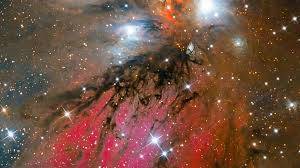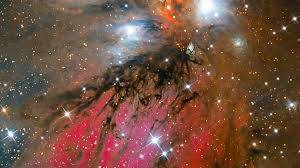The American space agency NASA regularly publishes a series of stunning images titled "Astronomy Picture of the Day." According to the Hindustan Times, these star-studded images have been captured using space telescope imaging techniques, revealing an unprecedented new perspective of outer space:
1. **Comet Bones Procs**: The first image showcases a captivating wide-field telescopic view of Comet Bones Procs, observed alongside the bright yellow star Hamal, also known as Alpha Arietis.
2. **The Great Carina Nebula**: An amazing picture of the Great Carina Nebula or NGC 3372, which is one of the largest star formation regions in the galaxy, extending over 300 light-years and surrounded by clouds of gas and dust.
3. **The Vela Constellation**: A mesmerizing image of a supernova in the Vela constellation, which occurred about 11,000 years ago, showing giant filamentary shock waves in visible light amidst gas and dust.
4. **Omega Centauri Star Cluster**: The stunning image above features the globular star cluster Omega Centauri, also known as NGC 2139. The cluster is filled with about 10 million stars older than the Sun, located approximately 15,000 light-years from Earth.
5. **Distorted Galaxy**: The Hubble Space Telescope captured a stunning image of the elongated and distorted galaxy NGC 7714, which has been affected by a collision with a neighboring galaxy.
6. **The Spaghetti Nebula**: The exquisite image showcases the remnants of the supernova Simeis 147, also known as the spaghetti-shaped nebula, located towards the Taurus and Auriga constellations.
7. **The Angel Nebula**: Described as stunning space abstract art, this amazing image of the dusty nebula NGC 2170, also known as the Angel Nebula, depicts stars surrounded by colorful and dusty gas.
8. **The Tarantula Nebula**: An impressive photographic documentation of the Tarantula Nebula, also known as 30 Doradus, which has a diameter of over 1,000 light-years in the Large Magellanic Cloud's giant star formation region.
9. **The Seagull Nebula**: A surreal image of the Seagull Nebula, composed of a vast area of glowing gas and dust resembling the head of a bird.




